Interventions for reducing sedentary behaviour in community-dwelling older adults
- PMID: 34169503
- PMCID: PMC8225503
- DOI: 10.1002/14651858.CD012784.pub2
Interventions for reducing sedentary behaviour in community-dwelling older adults
Abstract
Background: Older adults are the most sedentary segment of society, often spending in excess of 8.5 hours a day sitting. Large amounts of time spent sedentary, defined as time spend sitting or in a reclining posture without spending energy, has been linked to an increased risk of chronic diseases, frailty, loss of function, disablement, social isolation, and premature death.
Objectives: To evaluate the effectiveness of interventions aimed at reducing sedentary behaviour amongst older adults living independently in the community compared to control conditions involving either no intervention or interventions that do not target sedentary behaviour.
Search methods: We searched the Cochrane Central Register of Controlled Trials (CENTRAL), MEDLINE, Embase, CINAHL, PsycINFO, PEDro, EPPI-Centre databases (Trials Register of Promoting Health Interventions (TRoPHI) and the Obesity and Sedentary behaviour Database), WHO ICTRP, and ClinicalTrials.gov up to 18 January 2021. We also screened the reference lists of included articles and contacted authors to identify additional studies.
Selection criteria: We included randomised controlled trials (RCTs) and cluster-RCTs. We included interventions purposefully designed to reduce sedentary time in older adults (aged 60 or over) living independently in the community. We included studies if some of the participants had multiple comorbidities, but excluded interventions that recruited clinical populations specifically (e.g. stroke survivors).
Data collection and analysis: Two review authors independently screened titles and abstracts and full-text articles to determine study eligibility. Two review authors independently extracted data and assessed risk of bias. We contacted authors for additional data where required. Any disagreements in study screening or data extraction were settled by a third review author.
Main results: We included seven studies in the review, six RCTs and one cluster-RCT, with a total of 397 participants. The majority of participants were female (n = 284), white, and highly educated. All trials were conducted in high-income countries. All studies evaluated individually based behaviour change interventions using a combination of behaviour change techniques such as goal setting, education, and behaviour monitoring or feedback. Four of the seven studies also measured secondary outcomes. The main sources of bias were related to selection bias (N = 2), performance bias (N = 6), blinding of outcome assessment (N = 2), and incomplete outcome data (N = 2) and selective reporting (N=1). The overall risk of bias was judged as unclear. Primary outcomes The evidence suggests that interventions to change sedentary behaviour in community-dwelling older adults may reduce sedentary time (mean difference (MD) -44.91 min/day, 95% confidence interval (CI) -93.13 to 3.32; 397 participants; 7 studies; I2 = 73%; low-certainty evidence). We could not pool evidence on the effect of interventions on breaks in sedentary behaviour or time spent in specific domains such as TV time, as data from only one study were available for these outcomes. Secondary outcomes We are uncertain whether interventions to reduce sedentary behaviour have any impact on the physical or mental health outcomes of community-dwelling older adults. We were able to pool change data for the following outcomes. • Physical function (MD 0.14 Short Physical Performance Battery (SPPB) score, 95% CI -0.38 to 0.66; higher score is favourable; 98 participants; 2 studies; I2 = 26%; low-certainty evidence). • Waist circumference (MD 1.14 cm, 95% CI -1.64 to 3.93; 100 participants; 2 studies; I2 = 0%; low-certainty evidence). • Fitness (MD -5.16 m in the 6-minute walk test, 95% CI -36.49 to 26.17; higher score is favourable; 80 participants; 2 studies; I2 = 29%; low-certainty evidence). • Blood pressure: systolic (MD -3.91 mmHg, 95% CI -10.95 to 3.13; 138 participants; 3 studies; I2 = 73%; very low-certainty evidence) and diastolic (MD -0.06 mmHg, 95% CI -5.72 to 5.60; 138 participants; 3 studies; I2 = 97%; very low-certainty evidence). • Glucose blood levels (MD 2.20 mg/dL, 95% CI -6.46 to 10.86; 100 participants; 2 studies; I2 = 0%; low-certainty evidence). No data were available on cognitive function, cost-effectiveness or adverse effects.
Authors' conclusions: It is not clear whether interventions to reduce sedentary behaviour are effective at reducing sedentary time in community-dwelling older adults. We are uncertain if these interventions have any impact on the physical or mental health of community-dwelling older adults. There were few studies, and the certainty of the evidence is very low to low, mainly due to inconsistency in findings and imprecision. Future studies should consider interventions aimed at modifying the environment, policy, and social and cultural norms. Future studies should also use device-based measures of sedentary time, recruit larger samples, and gather information about quality of life, cost-effectiveness, and adverse event data.
Copyright © 2021 The Cochrane Collaboration. Published by John Wiley & Sons, Ltd.
Conflict of interest statement
Authors of this review were not allowed to screen, extract data from, or assess the risk of bias of studies on which they were a co‐author. Authors of this review were also authors of one of the studies included in this review (Rosenberg 2020).
Sebastien Chastin: no other conflicts of interest
Paul A Gardiner: no other conflicts of interest
Juliet A Harvey: no other conflicts of interest
Calum F Leask: no other conflicts of interest
Javier Jerez‐Roig: no other conflicts of interest
Dori Rosenberg: no other conflicts of interest
Maureen C Ashe: no other conflicts of interest
Jorunn L Helbostad is a professor at the Norwegian University of Science and Technology, Trondheim, Norway. She is a board member for the Norwegian Research Council. She has no competing interest related to this project.
Dawn A Skelton: no other conflicts of interest
All authors have worked on this review during the course of their employment and were therefore supported by their employing institutions as per their affiliation.
Figures
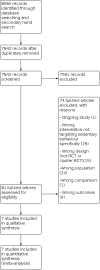
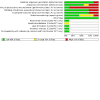


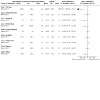
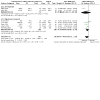

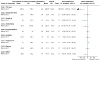

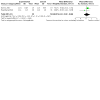
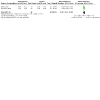
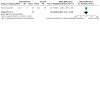

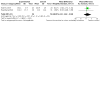
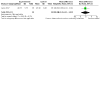

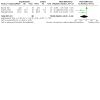

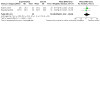




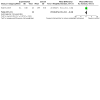


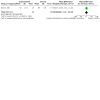
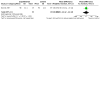
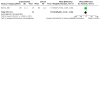

Update of
- doi: 10.1002/14651858.CD012784
Similar articles
-
Interventions outside the workplace for reducing sedentary behaviour in adults under 60 years of age.Cochrane Database Syst Rev. 2020 Jul 17;7(7):CD012554. doi: 10.1002/14651858.CD012554.pub2. Cochrane Database Syst Rev. 2020. PMID: 32678471 Free PMC article.
-
Folic acid supplementation and malaria susceptibility and severity among people taking antifolate antimalarial drugs in endemic areas.Cochrane Database Syst Rev. 2022 Feb 1;2(2022):CD014217. doi: 10.1002/14651858.CD014217. Cochrane Database Syst Rev. 2022. PMID: 36321557 Free PMC article.
-
Workplace interventions for reducing sitting at work.Cochrane Database Syst Rev. 2018 Dec 17;12(12):CD010912. doi: 10.1002/14651858.CD010912.pub5. Cochrane Database Syst Rev. 2018. PMID: 30556590 Free PMC article.
-
Workplace interventions for increasing standing or walking for decreasing musculoskeletal symptoms in sedentary workers.Cochrane Database Syst Rev. 2019 Nov 17;2019(11):CD012487. doi: 10.1002/14651858.CD012487.pub2. Cochrane Database Syst Rev. 2019. PMID: 31742666 Free PMC article.
-
Interventions for reducing sedentary behaviour in people with stroke.Cochrane Database Syst Rev. 2021 Jun 29;6(6):CD012996. doi: 10.1002/14651858.CD012996.pub2. Cochrane Database Syst Rev. 2021. PMID: 34184251 Free PMC article.
Cited by
-
Objectively Measured Physical Activity Levels and Associated Factors in Older US Women During the COVID-19 Pandemic: Cross-sectional Study.JMIR Aging. 2022 Aug 22;5(3):e38172. doi: 10.2196/38172. JMIR Aging. 2022. PMID: 35994346 Free PMC article.
-
Twenty-four hour physical activity, sedentary behaviour and sleep profiles in adults living with rheumatoid arthritis: a cross-sectional latent class analysis.J Act Sedentary Sleep Behav. 2024 Apr 17;3(1):10. doi: 10.1186/s44167-024-00049-5. J Act Sedentary Sleep Behav. 2024. PMID: 40217417 Free PMC article.
-
Physiology of sedentary behavior.Physiol Rev. 2023 Oct 1;103(4):2561-2622. doi: 10.1152/physrev.00022.2022. Epub 2023 Jun 16. Physiol Rev. 2023. PMID: 37326297 Free PMC article. Review.
-
Mapping context of sedentary behaviour in older adults who are prefrail and frail: an analysis of secondary outcomes from a longitudinal study (MAPS-B).BMJ Open. 2024 Nov 27;14(11):e084610. doi: 10.1136/bmjopen-2024-084610. BMJ Open. 2024. PMID: 39609010 Free PMC article.
-
Understanding Goal Setting and Behavior Change Mechanics in an Older Adult Sitting Reduction Intervention.Am J Health Promot. 2025 May;39(4):627-636. doi: 10.1177/08901171241302137. Epub 2024 Nov 21. Am J Health Promot. 2025. PMID: 39571076 Free PMC article. Clinical Trial.
References
References to studies included in this review
Barone 2017 {published data only}
Lyons 2017 {published data only}
-
- Lyons EJ, Swartz MC, Lewis ZH, Martinez E, Jennings K. Feasibility and acceptability of a wearable technology physical activity intervention with telephone counselling for mid-aged and older adults: a randomized controlled pilot trial. Journal of Medical Internet Research 2017;5(3):e28. [DOI: 10.2196/mhealth.6967] - DOI - PMC - PubMed
Maher 2017 {published data only}
Owari 2019 {published data only}
-
- Owari Y, Suzuki H, Miyatake N. "Active Guide" brochure reduces sedentary behavior of elderly people: a randomized controlled trial. Acta Medica Okayama 2019;73(5):427-32. - PubMed
Roberts 2019 {published data only}
Rosenberg 2020 {published data only}
White 2017 {published data only}
References to studies excluded from this review
Annesi 2004 {published data only}
Arrogi 2017 {published data only}
Ashe 2019 {published data only}
Aunger 2020 {published data only}
-
- Aunger JA, Greaves CJ, Davis ET, Asamane EA, Whittaker AC, Greig CA. A novel behavioural INTErvention to REduce Sitting Time in older adults undergoing orthopaedic surgery (INTEREST): results of a randomised-controlled feasibility study. Aging Clinical and Experimental Research 2020;32(12):2565-85. - PMC - PubMed
Awick 2017 {published data only}
-
- Awick EA, Ehlers D, Fanning J, Phillips SM, Wojcicki T, Mackenzie MJ, et al. Effects of a home-based DVD-delivered physical activity program on self-esteem in older adults: results from a randomized controlled trial. Psychosomatic Medicine 2017;79(1):71-80. [DOI: 10.1097/psy.0000000000000358] - DOI - PMC - PubMed
Azizan 2016 {published data only}
Britten 2017 {published data only}
Buman 2011 {published data only}
Burke 2013 {published data only}
-
- Burke L, Jancey J, Howat P, Lee A, Kerr D, Shilton T, et al. Physical activity results of a home-based physical activity and nutrition program for seniors (PANS). Journal of Science and Medicine in Sport 2012;15:S47-8. [DOI: 10.1016/j.jsams.2012.11.115] - DOI
-
- Burke L, Lee AH, Jancey J, Xiang L, Kerr DA, Howat PA, et al. Physical activity and nutrition behavioural outcomes of a home-based intervention program for seniors: a randomized controlled trial. International Journal of Behavioral Nutrition and Physical Activity 2013;10:14. [DOI: 10.1186/1479-5868-10-14] - DOI - PMC - PubMed
Burton 1995 {published data only}
-
- Burton LC, Paglia MJ, German PS, Shapiro S, Damiano AM. The effect among older persons of a general preventive visit on three health behaviors: smoking, excessive alcohol drinking, and sedentary lifestyle. The Medicare Preventive Services Research Team. Preventive Medicine 1995;24(5):492-7. [DOI: 10.1006/pmed.1995.1078] - DOI - PubMed
Chang 2013 {published data only}
Chiang 2019 {published data only}
Darvall 2016 {published data only}
De Greef 2010 {published data only}
De Greef 2011 {published data only}
-
- De Greef KP, Deforche BI, Ruige JB, Bouckaert JJ, Tudor-Locke CE, Kaufman et al. The effects of a pedometer-based behavioral modification program with telephone support on physical activity and sedentary behavior in type 2 diabetes patients. Patient Education and Counseling 2011;84(2):275-9. [DOI: 10.1016/j.pec.2010.07.010] - DOI - PubMed
Edwards 2018 {published data only}
Engelen 2019 {published data only}
-
- Engelen L, Drayton BA, Young S, Daley M, Milton K, Bauman A, et al. Impact and process evaluation of a co-designed 'Move More, Sit Less' intervention in a public sector workplace. Work 2019;64(3):587-99. - PubMed
Fanning 2016 {published data only}
Fennell 2016 {published data only}
-
- Fennell C. The Effects of a 16-Week Exercise Program and Cell Phone Use on Physical Activity, Sedentary Behavior, and Health-Related Outcomes [PhD thesis]. Kent State University, 2016.
Fitzsimons 2013 {published data only}
-
- Fitzsimons CF, Kirk A, Baker G, Michie F, Kane C, Mutrie N. Using an individualised consultation and activPAL feedback to reduce sedentary time in older Scottish adults: results of a feasibility and pilot study. Preventive Medicine 2013;57(5):718-20. [DOI: 10.1016/j.ypmed.2013.07.017] - DOI - PubMed
Gardiner 2011 {published data only}
Goldstein 1999 {published data only}
Greenwood‐Hickman 2016 {published data only}
Hansen 2012 {published data only}
-
- Hansen AW, Gronbaek M, Helge JW, Severin M, Curtis T, Tolstrup JS. Effect of a Web-based intervention to promote physical activity and improve health among physically inactive adults: a population-based randomized controlled trial. Journal of Medical Internet Research 2012;14(5):e145. [DOI: 10.2196/jmir.2109] - DOI - PMC - PubMed
Harvey 2018 {published data only}
Hetherington 2015 {published data only}
Kegler 2012 {published data only}
-
- Kegler MC, Alcantara I, Veluswamy JK, Haardorfer R, Hotz JA, Glanz K. Results from an intervention to improve rural home food and physical activity environments. Progress in Community Health Partnerships: Research, Education, and Action 2012;6(3):265-77. [DOI: 10.1353/cpr.2012.0042] - DOI - PMC - PubMed
Kendzor 2016 {published data only}
-
- Kendzor DE, Shuval K, Gabriel KP, Businelle MS, Ma P, High RR, et al. Impact of a mobile phone intervention to reduce sedentary behavior in a community sample of adults: a quasi-experimental evaluation. Journal of Medical Internet Research 2016;18(1):e19. [DOI: 10.2196/jmir.5137] - DOI - PMC - PubMed
Kerse 2005 {published data only}
-
- Kerse N, Elley CR, Robinson E, Arroll B. Is physical activity counseling effective for older people? A cluster randomized, controlled trial in primary care. Journal of the American Geriatrics Society 2005;53(11):1951-6. - PubMed
King 2016 {published data only}
-
- King AC, Hekler EB, Grieco LA, Winter SJ, Sheats JL, Buman MP, et al. Effects of three motivationally targeted mobile device applications on initial physical activity and sedentary behavior change in midlife and older adults: a randomized trial. PLOS ONE 2016;11(6):e0156370. [DOI: 10.1371/journal.pone.0156370] - DOI - PMC - PubMed
Koltyn 2019 {published and unpublished data}
Kuck 2014 {published data only}
Lakerveld 2013 {published data only}
Lerma 2017 {published data only}
Lerma 2020 {published data only}
-
- Lerma NL, Cho CC, Swartz AM, Maeda H, Cho Y, Strath SJ. Acceptance and feasibility of seated elliptical pedaling to replace sedentary behavior in older adults. Journal of Aging and Physical Activity 2020;28:844–53. - PubMed
Lewis 2016 {published data only}
Lubans 2013 {published data only}
-
- Lubans DR, Mundey CM, Lubans NJ, Lonsdale CC. Pilot randomized controlled trial: elastic-resistance-training and lifestyle-activity intervention for sedentary older adults. Journal of Aging and Physical Activity 2013;21(1):20-32. - PubMed
Lyons 2014 {published data only}
-
- Lyons EJ, Lewis ZH. An activity monitor and mobile device intervention is feasible among older adults. Clinical and Translational Science 2014;7(3):254-5. [DOI: 10.1111/cts.12171] - DOI
Matei 2015 {published data only}
Matson 2018 {published data only}
Matson 2019 {published data only}
Muller 2016 {published data only}
Nicklas 2014 {published data only}
Overgaard 2018 {published data only}
-
- Overgaard K, Nannerup K, Lunen MKB, Maindal HT, Larsen RG. Exercise more or sit less? A randomized trial assessing the feasibility of two advice-based interventions in obese inactive adults. Journal of Science and Medicine in Sport 2018;21(7):708-13. [DOI: 10.1016/j.jsams.2017.10.037] - DOI - PubMed
Paing 2019 {published data only}
-
- Paing AC, McMillan KA, Kirk AF, Collier A, Hewitt A, Chastin SFM. Dose-response between frequency of breaks in sedentary time and glucose control in type 2 diabetes: a proof of concept study. Journal of Science and Medicine in Sport 2019;22(7):808-13. [DOI: 10.1016/j.jsams.2019.01.017] - DOI - PubMed
Paschoa 2016 {published data only}
-
- Paschoa L, Ashton C. The evaluation of an exercise program for older rural adults. Activities, Adaptation and Aging 2016;40(1):67-77. [DOI: 10.1080/01924788.2016.1127075] - DOI
Pomeroy 2011 {published data only}
Poppe 2019 {published data only}
-
- Poppe L, De Bourdeaudhuij I, Verloigne M, Shadid S, Cauwenberg JV, Compernolle S, et al. Efficacy of a self-regulation-based electronic and mobile health intervention targeting an active lifestyle in adults having type 2 diabetes and in adults aged 50 years or older: two randomized controlled trials. Journal of Medical Internet Research 2019;21(8):e13363. [DOI: 10.2196/13363] - DOI - PMC - PubMed
Rasinaho 2012 {published data only}
-
- Rasinaho M, Hirvensalo M, Tormakangas T, Leinonen R, Lintunen T, Rantanen T. Effect of physical activity counseling on physical activity of older people in Finland. Health Promotion International 2012;27(4):463-74. - PubMed
Rockette‐Wagner 2017 {published data only}
-
- Rockette-Wagner B, Storti KL, Dabelea D, Edelstein S, Florez H, Franks PW, et al. Activity and sedentary time 10 years after a successful lifestyle intervention: The Diabetes Prevention Program. American Journal of Preventive Medicine 2017;52(3):292-9. [DOI: 10.1016/j.amepre.2016.10.007] - DOI - PMC - PubMed
Rosenberg 2015 {published data only}
Ruscello 2014 {published data only}
-
- Ruscello B, D’Ottavio S, Padua E, Tonelli C, Pantanella L. The influence of music on exercise in a group of sedentary elderly women: an important tool to help the elderly to stay active. Journal of Sports Medicine & Physical Fitness 2014;54(4):536-44. - PubMed
Sakurai 2012 {published data only}
-
- Sakurai T, Iimuro S, Sakamaki K, Umegaki H, Araki A, Ohashi Y, et al. Risk factors for a 6-year decline in physical disability and functional limitations among elderly people with type 2 diabetes in the Japanese elderly diabetes intervention trial. Geriatrics & Gerontology International 2012;12:117-26. [DOI: 10.1111/j.1447-0594.2011.00819.x] - DOI - PubMed
Siddique 2017 {published data only}
Sparker‐Griffin 2013 {published data only}
-
- Sparker-Griffin C. Wii-habilitation: using Wii as an effective intervention tool for seniors. OT Practice 2013;18(3):18-9.
Spring 2018 {published data only}
-
- Spring B, Pellegrini C, McFadden HG, Pfammatter AF, Stump TK, Siddique J, et al. Multicomponent mHealth intervention for large, sustained change in multiple diet and activity risk behaviors: The Make Better Choices 2 randomized controlled trial. Journal of Medical Internet Research 2018;20(6):e10528. [DOI: 10.2196/10528] - DOI - PMC - PubMed
Suboc 2016 {published data only}
Takemoto 2020 {published data only}
Taylor 2016 {published data only}
Tennstedt 2013 {published data only}
Toto 2012 {published data only}
Turunen 2020 {published data only}
-
- Turunen KM, Aaltonen-Määttä L, Törmäkangas T, Rantalainen T, Portegijs E, Keikkala S, et al. Effects of an individually targeted multicomponent counseling and home-based rehabilitation program on physical activity and mobility in community-dwelling older people after discharge from hospital: a randomized controlled trial. Clinical Rehabilitation 2020;34(4):491-503. [DOI: 10.1177/0269215519901155] - DOI - PubMed
Valerio 2012 {published data only}
-
- Valerio M, Vilela F, Da Silva L, Ramos L. Intervention to increase older adults' physical activity: results of the Epidoso project, Brazil. Journal of Science and Medicine in Sport 2012;15:S47. [DOI: 10.1016/j.jsams.2012.11.114] - DOI
Van Hoecke 2014 {published data only}
von Berens 2018 {published data only}
-
- von Berens Å, Koochek A, Nydahl M, Fielding RA, Gustafsson T, Kirn DR, et al. “Feeling more self-confident, cheerful and safe”. Experiences from a health-promoting intervention in community dwelling older adults - a qualitative study. Journal of Nutrition, Health and Aging 2018;22(4):541-8. [DOI: 10.1007/s12603-017-0981-5] - DOI - PMC - PubMed
von Bonsdorff 2009 {published data only}
Walters 2017 {published data only}
-
- Walters K, Kharicha K, Goodman C, Handley M, Manthorpe J, Cattan M, et al. Promoting independence, health and well-being for older people: a feasibility study of computer-aided health and social risk appraisal system in primary care. BMC Family Practice 2017;18(1):47. [DOI: 10.1186/s12875-017-0620-6] - DOI - PMC - PubMed
Wheeler 2019a {published data only}
Wheeler 2019b {published data only}
-
- Wheeler MJ, Dunstan DW, Ellis KA, Cerin E, Phillips S, Lambert G, et al. Effect of morning exercise with or without breaks in prolonged sitting on blood pressure in older overweight/obese adults: evidence for sex differences. Hypertension 2019;73(4):859-67. [DOI: 10.1161/HYPERTENSIONAHA.118.12373] - DOI - PubMed
Yan 2009 {published data only}
Yeom 2010 {published data only}
-
- Yeom H, Keller C, Fleury J, Belyea M. Culturally tailored motivational strategies for increasing regular physical activity in older Korean Americans: challenges and recommendations. Communicating Nursing Research 2010;43:248.
References to ongoing studies
Kleinke 2018 {published data only}
Additional references
Adams 2013
Alpass 2003
Aunger 2019
Bandura 1986
-
- Bandura A. Englewood Cliffs NJ: Prentice Hall,. Prentice-Hall Inc, 1986.
Bankoski 2011
Biswas 2015
-
- Biswas A, Oh PI, Faulkner GE, Bajaj RR, Silver MA, Mitchell MS, et al. Sedentary time and its association with risk for disease incidence, mortality, and hospitalization in adults: a systematic review and meta-analysis. Annals of Internal Medicine 2015;162(2):123-32. [DOI: 10.7326/M14-1651] - DOI - PubMed
Buck 2019
Bull 2020
Chastin 2010
Chastin 2013
Chastin 2014
Chastin 2015a
Chastin 2015b
-
- Chastin SFM, Buck C, Freiberger E, Murphy M, Brug J, Cardon G, et al. Systematic literature review of determinants of sedentary behaviour in older adults: a DEDIPAC study. International Journal of Behavioral Nutrition and Physical Activity 2015;12(1):127. [DOI: 10.1186/s12966-015-0292-3] - DOI - PMC - PubMed
Chastin 2015c
-
- Chastin SFM, Winkler EAH, Eakin EG, Gardiner PA, Dunstan DW, Owen N, et al. Sensitivity to change of objectively-derived measures of sedentary behavior. Measurement in Physical Education and Exercise Science 2015;19(3):138-47. [DOI: 10.1080/1091367X.2015.1050592] - DOI
Chastin 2016
-
- Chastin S, De Craemer M, Lien N, Bernaards C, Buck C, Oppert JM, et al. The SOS-Framework (Systems of Sedentary Behaviours): an international transdisciplinary consensus framework for the study of determinants, research priorities and policy on sedentary behaviour across the life course: a DEDIPAC-study. International Journal of Behavioral Nutrition and Physical Activity 2016;13(1):83. [DOI: 10.1186/s12966-016-0409-3] - DOI - PMC - PubMed
Chastin 2017
Chastin 2018
-
- Chastin SFM, Dontje ML, Skelton DA, Čukić I, Shaw RJ, Gill JMR, et al. Systematic comparative validation of self-report measures of sedentary time against an objective measure of postural sitting (activPAL). International Journal of Behavioral Nutrition and Physical Activity 2018;15(1):21. [DOI: 10.1186/s12966-018-0652-x] - DOI - PMC - PubMed
Copeland 2017
Covidence [Computer program]
-
- Veritas Health Innovation Covidence. Version accessed 26 January 2021. Melbourne, Australia: Veritas Health Innovation. Available at covidence.org.
CPHG 2011
-
- Cochrane Public Health Group. Guide for developing a Cochrane protocol. ph.cochrane.org/review-authors (accessed prior to 21 June 2021).
Deeks 2011
-
- Deeks JJ, Higgins JPT, Altman DG. Chapter 9: Analysing data and undertaking meta-analyses. In: Higgins JPT, Green S, editors(s). Cochrane Handbook for Systematic Reviews of Interventions Version 5.1.0 (updated March 2011). The Cochrane Collaboration, 2011. Available from training.cochrane.org/handbook/archive/v5.1/.
de Greef 2010
de Rezende 2014
Dogra 2012
Dogra 2017
DoH 2019
-
- Department of Health and Social Care. UK Chief Medical Officers' Physical Activity Guidelines. assets.publishing.service.gov.uk/government/uploads/system/uploads/attac... (accessed prior to 21 June 2021).
Dunstan 2012
Ekelund 2016
-
- Ekelund U, Steene-Johannessen J, Brown JW, Fagerland MW, Owen N, Powell KE, et al. Does physical activity attenuate, or even eliminate, the detrimental association of sitting time with mortality? A harmonised meta-analysis of data from more than 1 million men and women. Lancet 2016;388(10051):1302-10. [DOI: 10.1016/S0140-6736(16)30370-1] - DOI - PubMed
Elavsky 2019
Gardiner 2011
Gardner 2016
Gomersall 2015
GRADEpro GDT [Computer program]
-
- McMaster University (developed by Evidence Prime) GRADEpro GDT. Version accessed 20 May 2021. Hamilton (ON): McMaster University (developed by Evidence Prime). Available at gradepro.org.
Greenwood‐Hickman 2016
Guyatt 2011
Harvey 2013
Harvey 2015
Healy 2008
Healy 2011
Henson 2013
Hertzog 2008
Higgins 2021
-
- Higgins JP, Thomas J, Chandler J, Cumpston M, Li T, Page MJ, Welch VA, editor(s). Cochrane Handbook for Systematic Reviews of Interventions Version 6.2 (updated February 2021). Cochrane, 2021. Available from training.cochrane.org/handbook. - PMC - PubMed
Katzmarzyk 2009
Katzmarzyk 2010
Kerr 2012
-
- Kerr J, Rosenberg DE, Nathan A, Millstein R, Carlson J, Crist K, et al. Applying the ecological model of behavior change to a physical activity trial in retirement communities: description of the study protocol. Contemporary Clinical Trials 2012;33(6):1180-8. [DOI: 10.1016/j.cct.2012.08.005] - DOI - PMC - PubMed
Kerr 2018
-
- Kerr J, Rosenberg D, Millstein RA, Bolling K, Crist K, Takemoto M, et al. Cluster randomized controlled trial of a multilevel physical activity intervention for older adults. International Journal of Behavioral Nutrition and Physical Activity 2018;15(1):32. [DOI: 10.1186/s12966-018-0658-4] - DOI - PMC - PubMed
King 2001
Laforge 1999
Lauder 2006
Leask 2015
Leask 2016
Leask 2017
-
- Leask CF, Sandlund M, Skelton DA, Chastin SFM on behalf of the GrandStand Research Group. Co-creating a tailored public health intervention to reduce older adults’ sedentary behaviour. Health Education Journal 2017;5:595–608. [DOI: 10.1177/0017896917707785] - DOI
Manns 2012
Martin 2015
Moher 2009
Owen 2010
Owen 2011
Palmer 2019
Perera 2007
Piercy 2018
Prince 2014
-
- Prince SA, Saunders TJ, Gresty K, Reid RD. A comparison of the effectiveness of physical activity and sedentary behaviour interventions in reducing sedentary time in adults: a systematic review and meta-analysis of controlled trials. Obesity Reviews 2014;15(11):905-19. [DOI: 10.1111/obr.12215] - DOI - PMC - PubMed
Prochaska 1992
-
- Prochaska JO, DiClemente CC, Norcross JC. In search of the structure of change. In: Klar Y, Fisher J, Chinsky JM, Nadler, editors(s). Self Change. New York: Springer, 1992:87-114.
Review Manager 2020 [Computer program]
-
- Nordic Cochrane Centre, The Cochrane Collaboration Review Manager 5 (RevMan 5). Version 5.4. Copenhagen: Nordic Cochrane Centre, The Cochrane Collaboration, 2020.
Rosenberg 2015
-
- Rosenberg DE, Bellettiere J, Gardiner PA, Villarreal VN, Crist K, Kerr J. Independent associations between sedentary behaviors and mental, cognitive, physical, and functional health among older adults in retirement communities. Journals of Gerontology. Series A, Biological Sciences and Medical Sciences 2016;71(1):78-83. [DOI: 10.1093/gerona/glv103] - DOI - PMC - PubMed
Ross 2020
-
- Ross R, Chaput JP, Giangregorio LM, Janssen I, Saunders TJ, Kho ME, et al. Canadian 24-hour movement guidelines for adults aged 18-64 years and adults aged 65 years or older: an integration of physical activity, sedentary behaviour, and sleep. Applied Physiology, Nutrition, and Metabolism 2020;45(10):S57-102. [DOI: 10.1139/apnm-2020-0467] - DOI - PubMed
Sansano 2019
-
- Sansano-Nadal O, Giné-Garriga M, Brach JS, Wert DM, Jerez-Roig J, Guerra-Balic M, et al. Exercise-based interventions to enhance long-term sustainability of physical activity in older adults: a systematic review and meta-analysis of randomized clinical trials. International Journal of Environmental Research and Public Health 2019;16(14):E2527. [DOI: 10.3390/ijerph16142527] - DOI - PMC - PubMed
SBRN 2012
-
- Sedentary Behaviour Research Network. Standardized use of the terms "sedentary" and "sedentary behaviours" Letter to the Editor. Applied Physiology, Nutrition, and Metabolism 2012;37:540-2. - PubMed
Schünemann 2021
-
- Schünemann HJ, Higgins JPT, Vist GE, Glasziou P, Akl EA, Skoetz N, et al. Chapter 14: Completing ‘Summary of findings’ tables and grading the certainty of the evidence. In: Higgins JPT, Thomas J, Chandler J, Cumpston M, Li T, Page MJ, Welch VA, editor(s). Cochrane Handbook for Systematic Reviews of Interventions Version 6.2 (updated February 2021). Cochrane, 2021. Available from training.cochrane.org/handbook.
Schwarzer 2007
-
- Schwarzer R, Schüz B, Ziegelmann JP, Lippke S, Luszczynska A, Scholz U. Adoption and maintenance of four health behaviors: theory-guided longitudinal studies on dental flossing, seat belt use, dietary behavior, and physical activity. Annals of Behavioral Medicine 2007;33(2):156-66. [DOI: 10.1007/BF02879897] - DOI - PubMed
Shrestha 2014
Shrestha 2019
-
- Shrestha G, Grgic J, Wiesner G, Parker A, Podnar H, Bennie JA, et al. Effectiveness of interventions for reducing nonoccupational sedentary behaviour in adults and older adults: a systematic review and meta-analysis. British Journal of Sports Medicine 2019;53:1206-13. [DOI: 10.1136/bjsports-2017-098270] - DOI - PubMed
Song 2015
-
- Song J, Lindquist LA, Chang RW, Semanik PA, Ehrlich-Jones LS, Lee J, et al. Sedentary behavior as a risk factor for physical frailty independent of moderate activity: results from the Osteoarthritis Initiative. American Journal of Public Health 2015;105(7):1439-45. [DOI: 10.2105/AJPH.2014.302540] - DOI - PMC - PubMed
Sparling 2015
Stamatakis 2019
-
- Stamatakis E, Ekelund U, Ding D, Hamer M, Bauman AE, Lee IM. Is the time right for quantitative public health guidelines on sitting? A narrative review of sedentary behaviour research paradigms and findings. British Journal of Sports Medicine 2019;53:377-82. [DOI: 10.1136/bjsports-2018-099131] - DOI - PMC - PubMed
Sterne 2011
-
- Sterne JAC, Egger M, Moher D. Chapter 10: Addressing reporting biases. In: Higgins JP, Green S, editor(s). Cochrane Handbook for Systematic Reviews of Interventions Version 5.1.0 (updated March 2011). The Cochrane Collaboration, 2011. Available from training.cochrane.org/handbook/archive/v5.1/.
Stockwell 2019
-
- Stockwell S, Schofield P, Fisher A, Firth J, Jackson SE, Stubbs B, et al. Digital behavior change interventions to promote physical activity and/or reduce sedentary behavior in older adults: a systematic review and meta-analysis. Experimental Gerontology 2019;120:68-87. [DOI: 10.1016/j.exger.2019.02.020] - DOI - PubMed
Tandon 2012
-
- Tandon PS, Zhou C, Sallis JF, Cain KL, Frank LD, Saelens BE. Home environment relationships with children’s physical activity, sedentary time, and screen time by socioeconomic status. International Journal of Behavioral Nutrition and Physical Activity 2012;9(1):88. [DOI: 10.1186/1479-5868-9-8810.1186/1479-5868-9-88] - DOI - PMC - PubMed
Teychenne 2010
Yerrakalva 2019
Publication types
MeSH terms
Substances
Grants and funding
LinkOut - more resources
Full Text Sources
Medical

